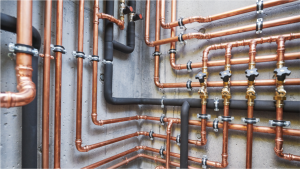The field of material testing and quality control has always been crucial for industries aiming to ensure the reliability of their products. One key tool in this process is the Universal Testing Machine (UTM), which measures the properties of materials under different conditions. Over time, there have been advancements in UTM technology that improve accuracy through calibration. In this post, we will explore the innovations that are driving UTM accuracy and revolutionising material testing.
The Significance of Calibration
Before delving into the advancements, it’s important to understand why calibration plays a huge role in achieving results with UTMs. Universal testing machine calibration involves determining and adjusting any deviations or errors present in a machine’s measurements. It enables us to establish a correlation between the instrument’s readings and standard reference values.
Advancements in Calibration Technology
Thanks to progress, manufacturers have made improvements in calibration techniques that greatly impact UTM accuracy. Let’s delve into some innovations.
1. Real Time Accuracy Monitoring
UTMs now come equipped with real-time accuracy monitoring features to maintain precision throughout testing processes. These systems automatically assess measurement variations while testing volumes of specimens and actively adjust calibration settings as needed to minimise errors.
2. Integrated Feedback Sensors
In recent times, manufacturers have incorporated feedback sensors into UTMs. These sensors continuously monitor the forces applied during testing and provide real-time data for adjustments. This advanced feature ensures measurements by addressing any potential inconsistencies that may arise during testing.
3. Linear Calibration Approaches
Traditional calibration methods often assume a linear relationship between load and displacement measurements. However, modern UTMs implement non-linear algorithms that consider various complexities, such as different types of loads, specimen geometries and material behaviours. These advancements result in measurements across all ranges.
4. Compensation Techniques for Environmental Influences
Environmental factors like temperature changes can affect measurement results by impacting specimen behaviour or machine performance. To address this comprehensively, manufacturers now utilise environmental compensation techniques that continuously monitor and account for fluctuations in the testing environment. This significantly contributes to improved accuracy, especially when dealing with temperature materials.
5. Utilization of Machine Learning Algorithms
Machine learning algorithms have made their way into the field of UTMs. These algorithms can recognise recurring patterns in test results data. Adjust calibration levels accordingly over time. Consequently, the accuracy of measurement outcomes progressively improves with each use, empowering industries to achieve levels of precision.
Benefits of Enhanced UTM Accuracy
Investing in UTMs with improved accuracy offers advantages. They are listed as follows.
- More Precise Material Analysis: Higher UTM accuracy enables industries to make data-driven decisions regarding engineering designs and material selection by providing material characterisation.
- Enhanced Product Performance: Accurate material testing leads to product performance, increased reliability and fewer failures or defects. This is crucial across industries, including aerospace, automotive, construction and medical devices.
- Optimal Resource Allocation: Advanced UTMs that accurately identify material properties allow organisations to optimise resource allocation by ensuring compatibility between materials capabilities and intended applications. This prevents waste while maximising productivity.
6. Streamlined Automated Calibration Procedures
Traditionally, calibration processes required adjustments for measurements. However, the introduction of automated calibration software has made the procedure more streamlined and efficient. These software solutions use algorithms and predefined parameters to automate calibration, minimising error and ensuring consistency.
7. Remote Calibration Capabilities
Another significant advancement is the ability to conduct calibrations remotely. With calibration capabilities, users can connect to a UTM from a location and perform necessary calibrations without being physically present at the machine. This is especially useful in situations where accessing UTMs is difficult or when there is a need for calibration.
8. Analyzing Measurement Trends
Manufacturers of UTMs are integrating data analytics capabilities into the software interfaces of their machines. By examining trends in measurements over time, these systems can detect patterns or deviations that might impact accuracy levels. This allows users to identify issues and take proactive steps, such as adjusting calibration settings or addressing maintenance requirements.
Conclusion
Calibration plays a significant role in ensuring mechanical property measurements with UTMs. The recent advancements in calibration technology discussed in this guest post showcase progress that is pushing the boundaries of UTM accuracy further. By embracing these innovations and investing in UTMs equipped with calibration features, industries across various sectors can achieve a new level of precision in material testing processes – ultimately driving innovation, efficiency and product excellence.









